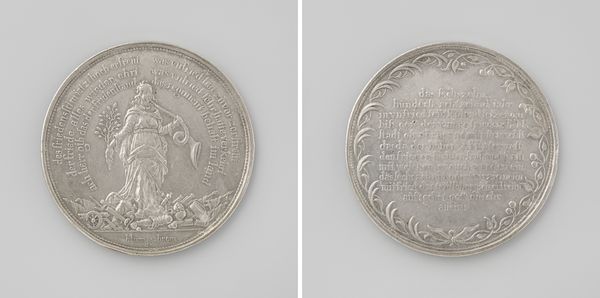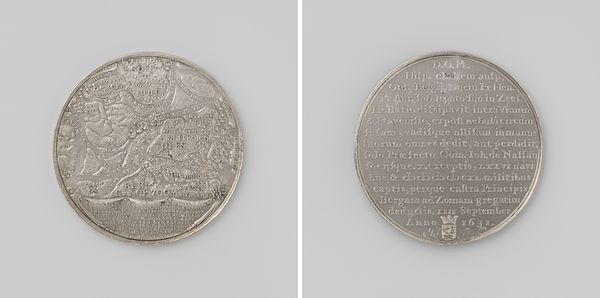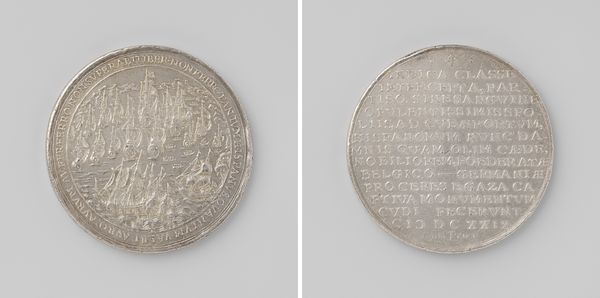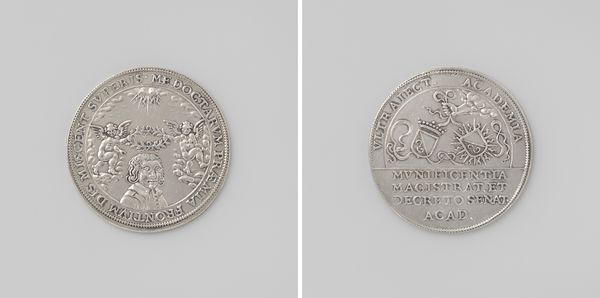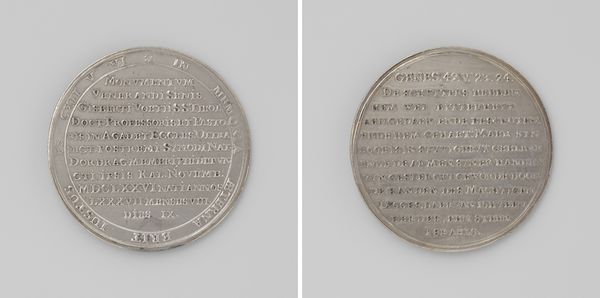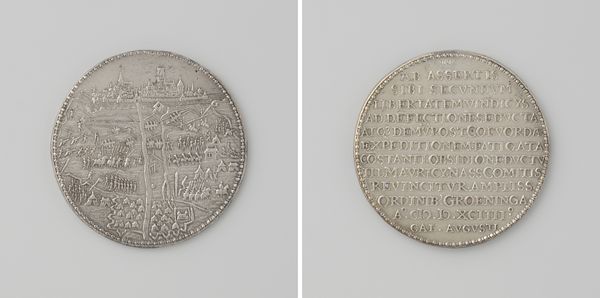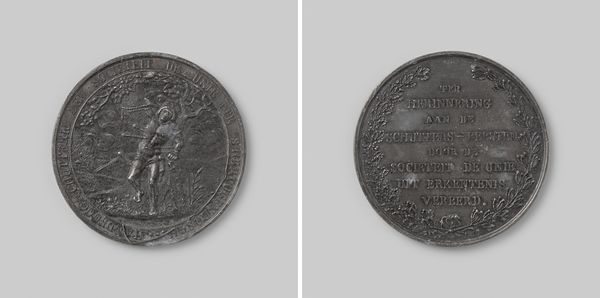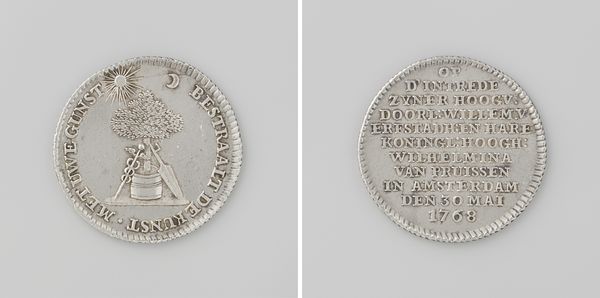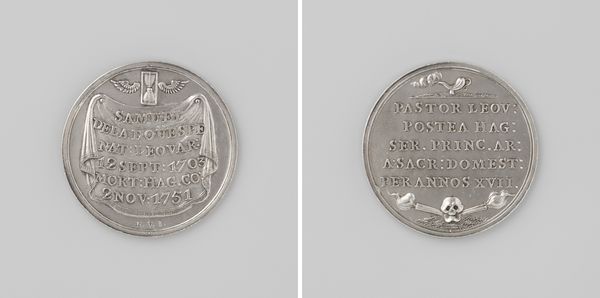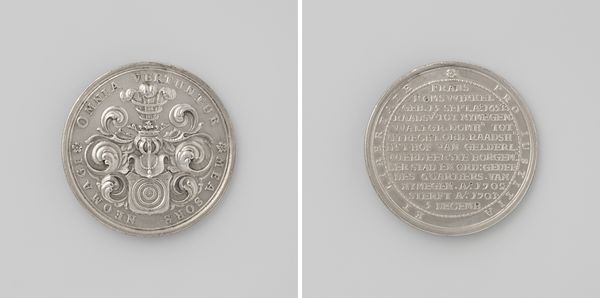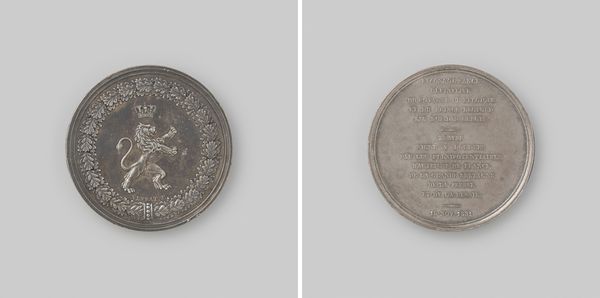
metal, relief, sculpture
#
baroque
#
metal
#
relief
#
sculpture
#
history-painting
Dimensions: diameter 6 cm, weight 60.67 gr
Copyright: Rijks Museum: Open Domain
Curator: Editor: This relief sculpture, a metal piece by Johannes Looff called *Inname van 's Hertogenbosch door Frederik Hendrik,* created around 1638-1639, really grabs my attention. The intricate detail pressed into the metal is striking. What are your thoughts on this example of Baroque sculpture? Curator: Immediately, I am drawn to the processes and labor that brought this piece into existence. Metalworking in this period was deeply connected to both technological innovation and the social structures of the time. How does the material—metal—influence your perception of the narrative depicted here? Editor: Well, the narrative depicts a historical event; it's a siege. I wonder how the choice of metal transforms the idea of conquest? What statement is being made about warfare and power by memorializing this event on a metal relief? Curator: Excellent question! Consider the mines, the forges, the skilled artisans—all part of a vast system required to produce even a piece this “small”. The choice of metal elevates the event, lending a sense of permanence and importance, associating the military victory with the perceived inherent value and endurance of metal. And consider, too, the cultural context of luxury and the association of metal with wealth. Do you think the mode of display also shapes our understanding? Editor: I didn’t consider the social dynamics of labor to create that piece, but that provides context! Considering it would likely have been displayed as a symbol of wealth and power, that suggests the “capture” wasn’t only military, but also economic. It represents the resources funneled into the Dutch state, almost like an advertisement or declaration of power in that period. Curator: Precisely. So, what have you taken away from examining the means of production in this context? Editor: I realize that analyzing art involves more than just understanding its themes or aesthetics; it means acknowledging the labor, and materials involved, as a form of material and cultural propaganda. Curator: That is very well put! Understanding art through its materiality opens up deeper avenues into comprehending the work’s true cultural impact.
Comments
No comments
Be the first to comment and join the conversation on the ultimate creative platform.
